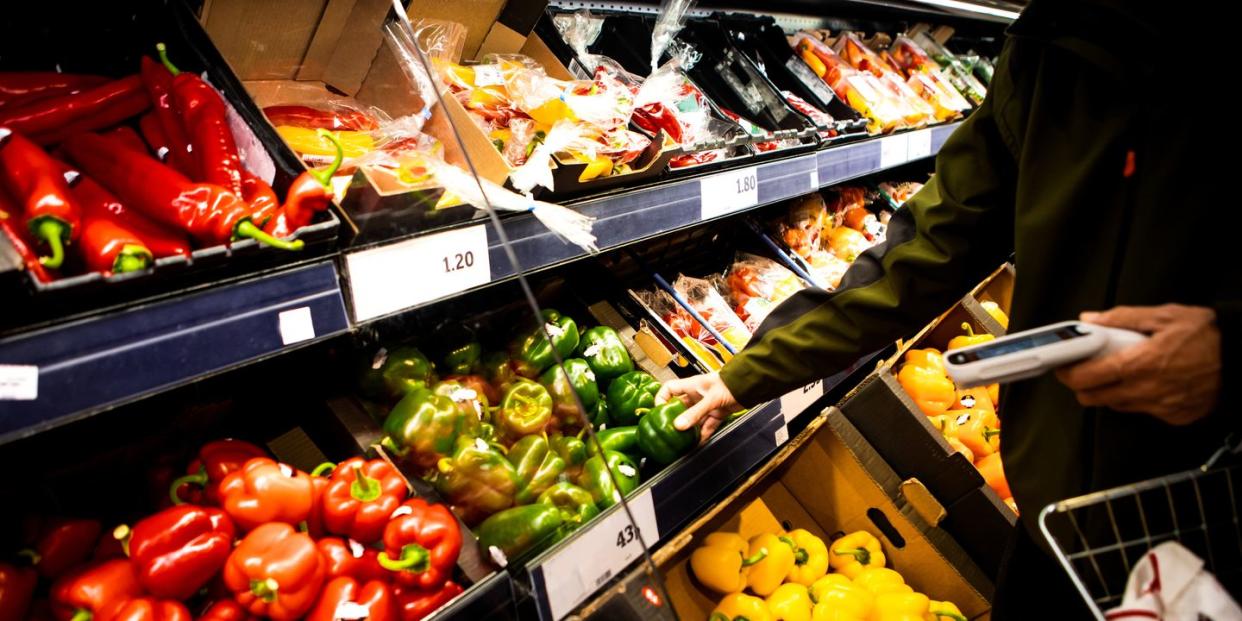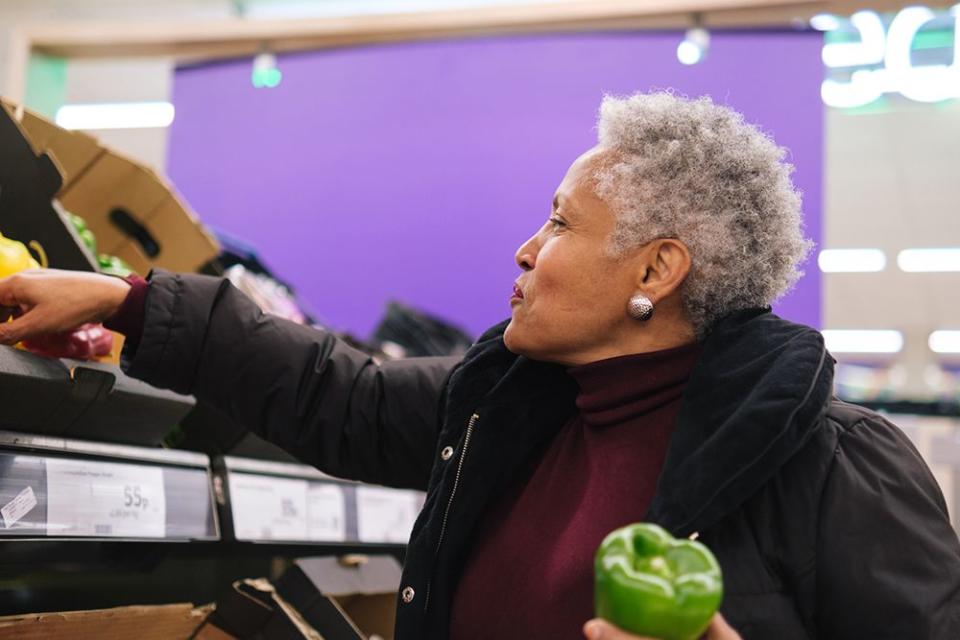Clever ways to save money on your food shop

When it comes to the weekly shop, any way to save money is to be welcomed. So we’ve gathered some expert tips to help you shop smarter and save money next time you head to the shops.
While looking at what you already have in, meal planning and writing a list before you go to to shop can help, there are also some clever ways to cut costs once you're in the store or shopping online. Discover how to save money on your food shopping with our easy tips.
Choose a small trolley or a basket
Much like how a goldfish continues to grow to fill its container, the amount we buy is directly related to the size of our shopping trolley. When retailers doubled the size of their trolleys, people bought 37% more groceries, according to Martin Lindstrom, author of Brandwashed: Tricks Companies Use To Manipulate Our Minds And Persuade Us To Buy. If you’re not planning on a big shop, grab a basket so you won’t overspend.
Take cash
‘Without a budget, I wouldn’t have any money remaining to save for other things,’ says Lisa Woodley, author of Budget Happy: The Win-Win Secret To Saving And Spending Money. ‘A shopping list will stop you deviating from your course. I’m tactical – I tick off my items, pay and leave. Using cash prevents me spending more than my allocated budget.’
Go to the supermarket late
Shop close to closing time when stores can cut the already discounted prices by 75%. You can always buy what’s available and google a recipe when you get home. ‘I sometimes buy a tired cauliflower, knowing I have frozen breadcrumbs and some cheese to turn it into cauliflower cheese,’ says Ann Russell, author of How To Save Money: A Guide To Spending Less While Still Getting The Most Out Of Life. ‘Or I buy reduced sausages and mince to freeze.’
Don’t be a label snob
Switching from big brands to supermarket ‘own label’, or from ‘own label’ to a budget line can cut grocery bills by 30%, according to moneysavingexpert.com.

Go solo
This was a popular tip from Prima readers on our Facebook page, and Ann agrees: ‘It depends on your partner but, often, you’re better off shopping alone, as some people will wander off and buy expensive items and can’t control themselves in the wine aisle!’
Beware of middle shelves and aisles
Middle shelves in the middle aisles are often costly, says consumer rights expert Martyn James. ‘Smaller bags of nuts or flour may be priced at a premium when prominently displayed, but head to the world food or baking sections and you’ll find bigger bags with a cheaper unit price. And look down – the cheapest options are often on the bottom shelves rather than at eye level.’
Discounts for over-60s
If you’re 60 or over, you can get a 10% discount at Iceland or The Food Warehouse every Tuesday with a valid ID. Boots gives over-60s discounts on its own range of products, plus eight points for every £1 you spend on Boots’ own-brand products; it’s four points for everyone else. Every point you earn is equivalent to a penny to spend in store. Boots also offers 10% off glasses and 15% off hearing aids.
Green appeal: Waitrose & Partners and Lidl have the best green practices, according to
a Which? survey, which looked at supermarkets’ greenhouse gas emissions, plastic and food waste.
Get a delivery pass
Delivery passes are a way of getting free deliveries for your online shop for a monthly or annual fee. If you usually do your weekly online shop at the same supermarket, our research found that buying a pass could save you around £200 a year!
Find the best price
Labelling on foods is too confusing, according to a report by the Competition and Markets Authority, especially when it comes to the price per unit.
Supermarkets are obliged to show the price per unit of products by weight or volume – such as per 100g, kg, 100ml or litre – to make it easier for shoppers to decide the best value for money. But the way the unit price of different products is given varies massively; in one supermarket, some tea bags were priced per 100g, while others were priced per bag. Unsurprisingly, this means many shoppers are struggling to work out the cheapest option.
The solution is to pull out your calculator... If the unit pricing for two products doesn’t use the same measurement, look at the total weight or volume of each pack and the price of each product and do the maths yourself. Need some help for expensive items? Use the unit price calculator at Omni Calculator.
You Might Also Like


